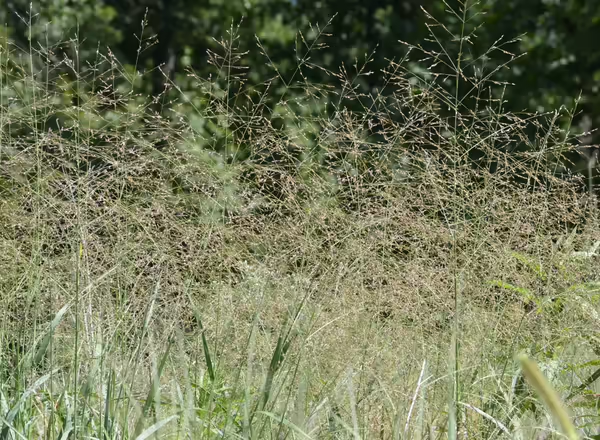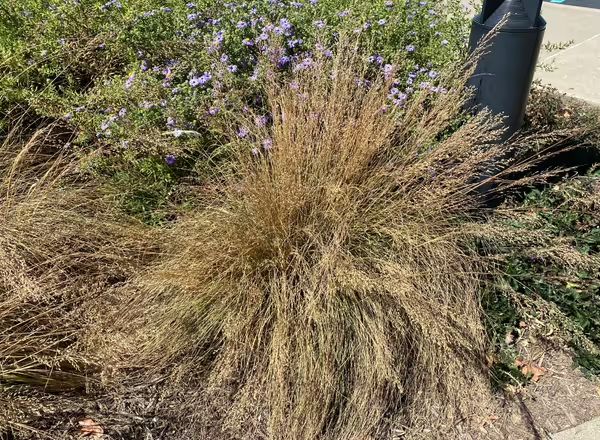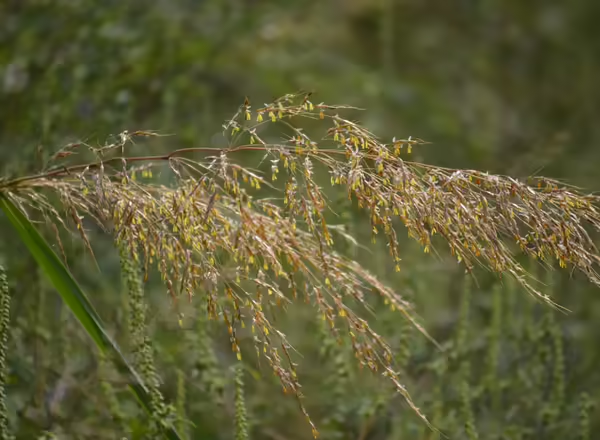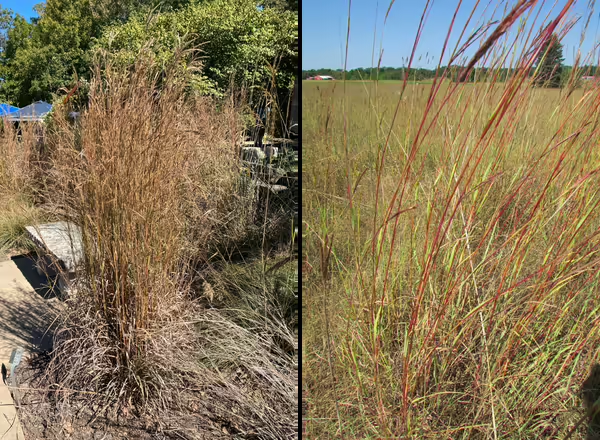
Each year when autumn rolls around, I enjoy hiking through the woods or walking through the neighborhood to find the prettiest trees. It really is a spectacular display of color, from yellows to oranges, reds, and purples.
While I have my favorite fall trees, I also find that grasses come into their prime in the autumn. Some display bold colors, while the inflorescences of others dry out and puff up, giving them a fluffy appearance.
My top 5 grasses ranked by their fall qualities

Number 5: Switchgrass
Coming in at number 5 is Switchgrass, Panicum virgatum. Switchgrass foliage doesn’t boast bold color – it turns a straw-colored yellow. Why I love Switchgrass in the fall is because of its habit, or form. This tall bunchgrass will do a good job at staying upright in a tight cluster. As its leaves senesce, or die, they will curl tightly. In the blustery cool winds of fall, this grass rustles pleasantly. Its large open airy panicles, often over a foot tall, provide a wispy appearance to the top of this bunchgrass, and sometimes retain a deep red color.

Number 4: Prairie Dropseed
Ranking a bit higher on my list is Prairie Dropseed, Sporobolus heterolepsis. If I could plant Prairie Dropseed in every flower garden, I would. It makes such a statement piece, due to its compact clump of very thin leaves. In the fall, it has flowering stalks a few feet tall with panicle inflorescences with spikelets that smell of buttered popcorn if you catch it at the right time. While the leaves stay green for a while, the inflorescences turn a pleasant golden color.

Number 3: Indiangrass
I’ve mentioned the colors of Indiangrass, Sorghastrum nutans, before, and I’ll say it again! Blue-green foliage topped with golden-orange silky spikelets, Indiangrass is a stunner. As its spikelets dry out, they fluff up a bit and soften the inflorescences.

Number 2: Big Bluestem
Big Bluestem, Andropogon gerardii, comes in second place in my book, boasting red to purple stems and golden to red leaves early in the fall. As autumn passes, it will lose its color and turn a more drab brown, which is why it ranks #2 for me. Its turkey-foot shaped inflorescences will turn from red to brown, and like Indiangrass, fluff up.

Number 1: Little Bluestem
Rounding it out at number one is Little Bluestem, Schizachyrium scoparium. Hands-on down this is my favorite grass in autumn. The stems turn a deep red to orange that makes this grass pop. Add in the feathery fluffy spikelets held along the stems, and this grass just can’t be beat.
Have you noticed the changing colors of grasses around your home, on your property, or along roadsides? Take a moment to appreciate the spectacular display.
Never miss a new post! Sign up for our email list.
ABOUT THE AUTHOR: Erin Garrett is a Natural Resources, Environment, and Energy Educator for University of Illinois Extension serving Alexander, Johnson, Massac, Pulaski, and Union counties. Erin develops and delivers high impact programming to adults and youth to help them develop an appreciation for natural resources and to empower them to make small changes to positively impact the environment. Erin’s programming focuses on why homeowners should consider choosing native plants, how to support native pollinators, how to identify grasses, how to identify and manage invasive species, and developing an appreciation for prairie ecosystems.
ABOUT THE BLOG: Grasses at a Glance dives into grass identification, focusing on tips and tricks that make grass identification possible. Get information about native and non-native species, how to tell look-alikes apart, and which grasses you can find in Illinois.